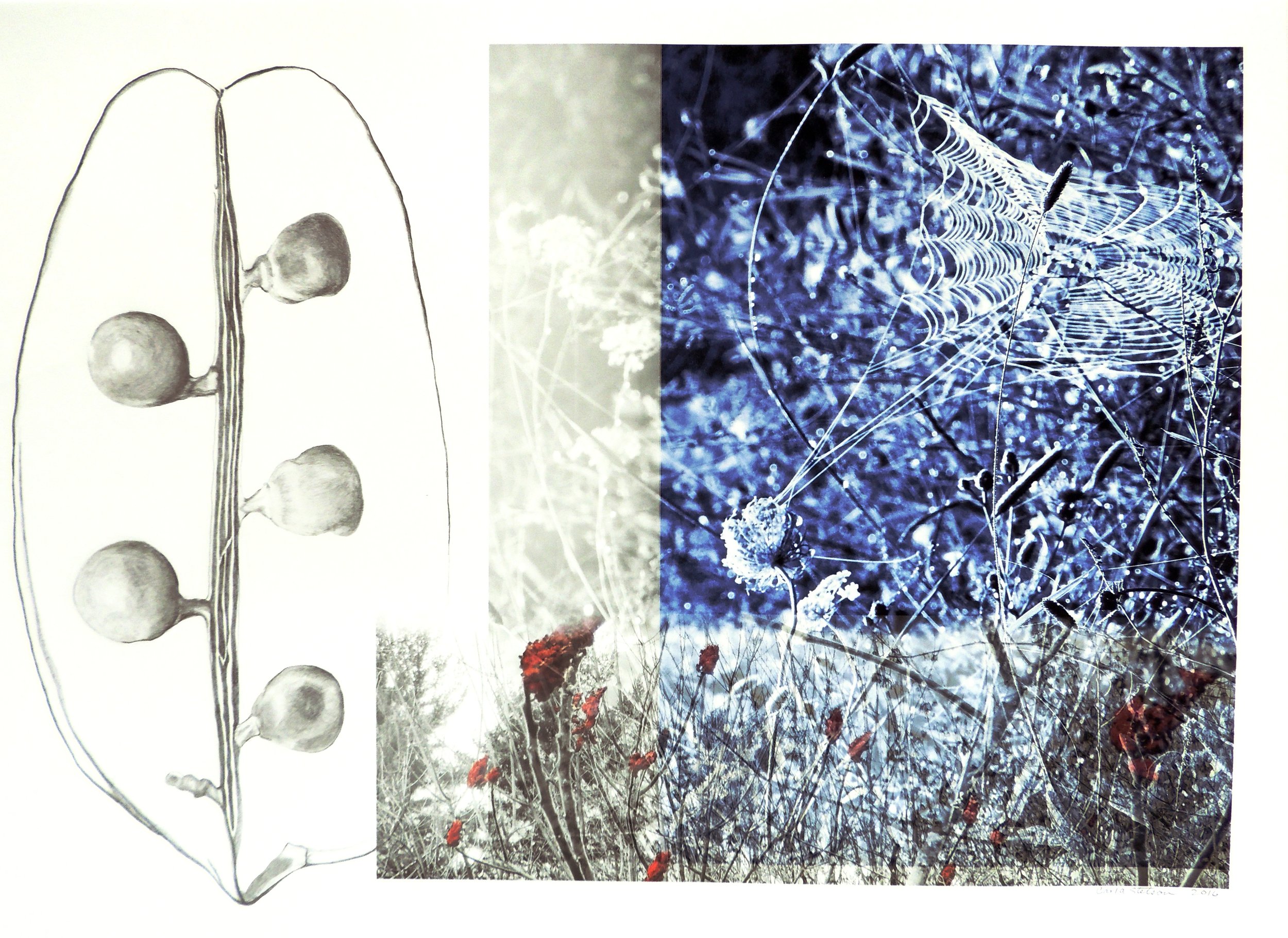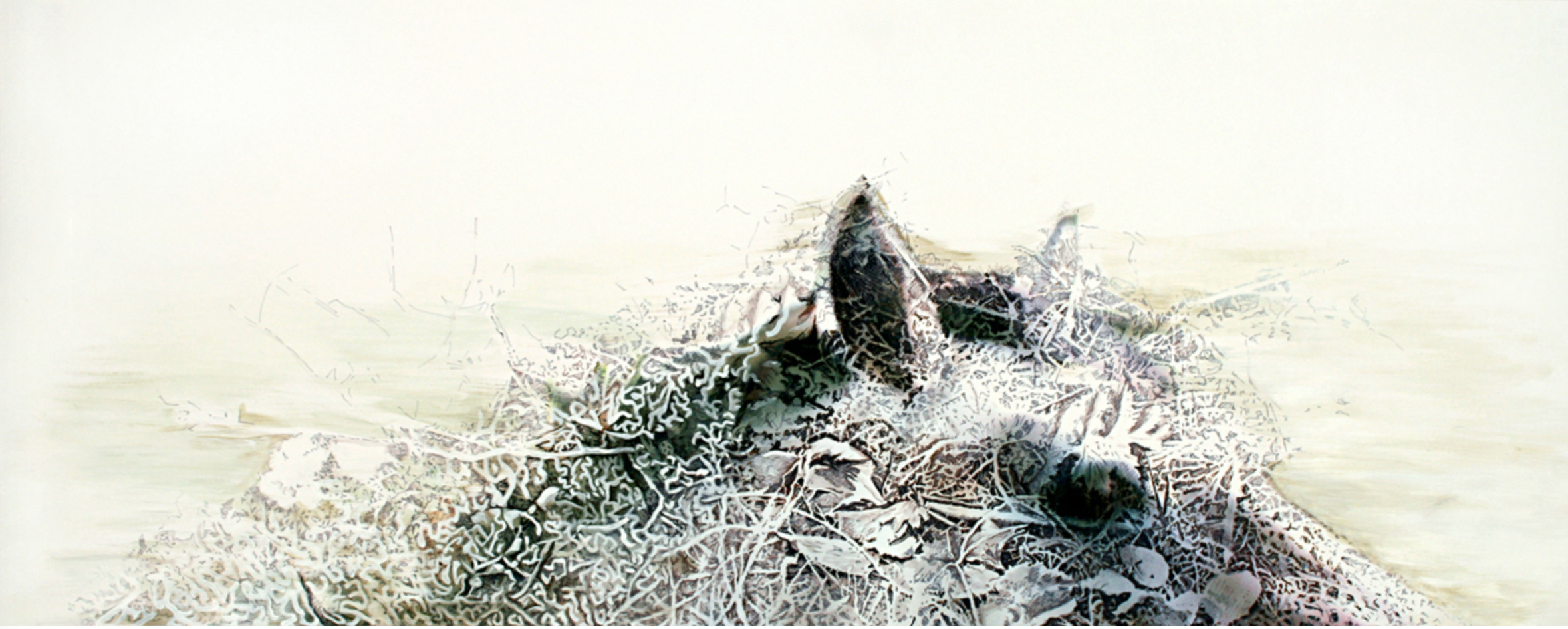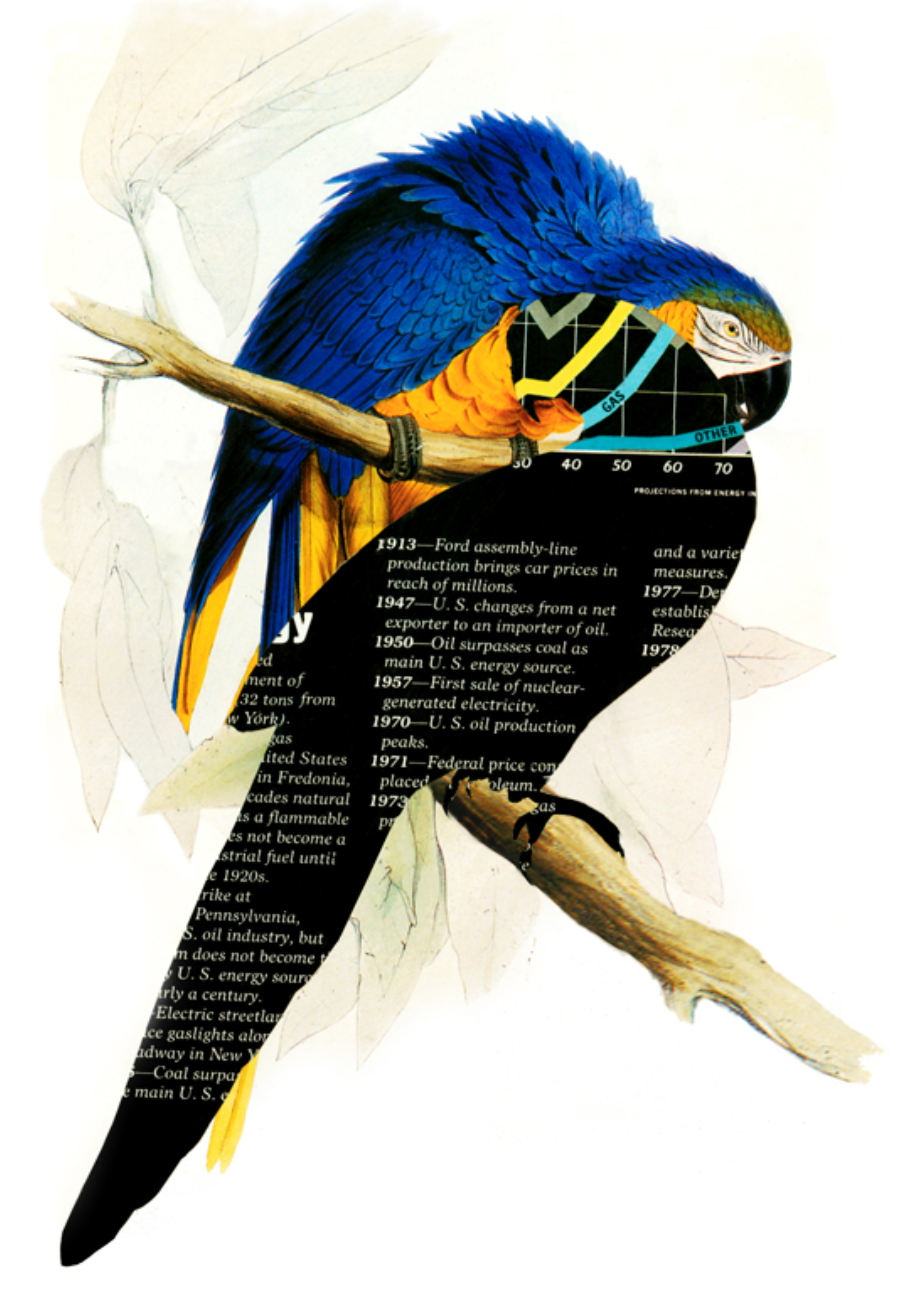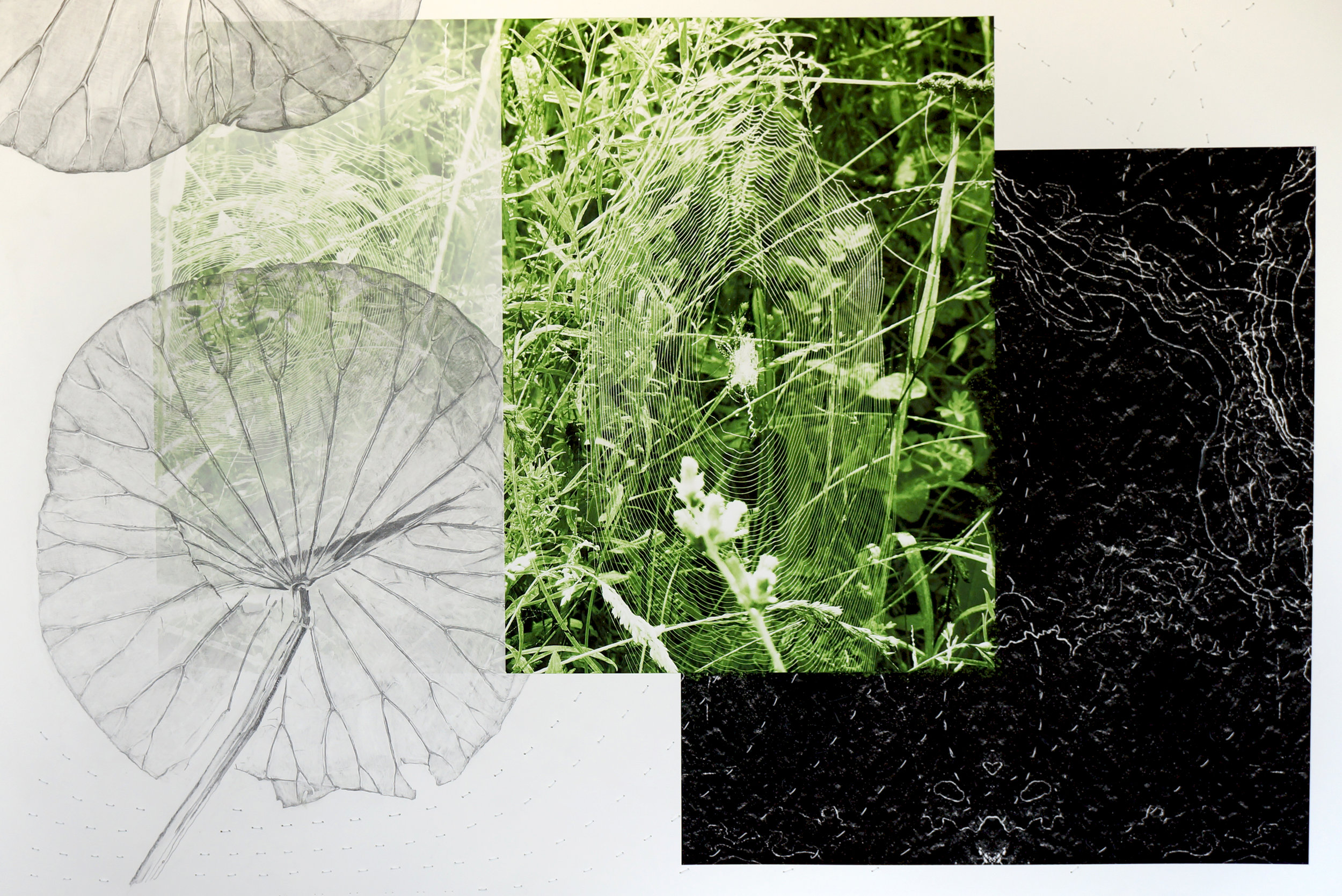Alluvian editor Sydney O'Shaughnessy spoke with artist and professor Carla Stetson about her art, inspiration, and process.
On the environment as inspiration for art
“The [environmental crisis] is the issue of our time. I’ve always kind of been in love with the natural world even as a kid – out there with my butterfly net, catching butterflies and stuff like that – and so it’s an interest that I have. But as I’ve progressed in my art, I guess I’ve found myself more and more drawn to or away from other social issues and toward the environmental issues because I feel that it’s super critical right now. We are really at the tipping point.”
“I want [the viewer] to feel a sense of wonder. . . .. The artwork that is in the studio right now all has spider webs in it, which I find amazing and wonderful. I just discovered that if I go out at a certain time in the morning in the fall, I can find a million spider webs and they are all lit from the back. So they are just at the right moment for being photographed and it shows you the pervasiveness of the insect world, like it’s everywhere and we don’t notice it. And so that’s sort of what I want people to think of with this new body of work. So they are seeing the spider web but they are also seeing the map and some stitching and maybe something that resembles the structure of a spider web but it’s human made. So that’s the kind of thing. It’s poetic. I’m drawing these analogies between like things.”
On the importance of art
“Is it important to express anything through art? [Yes} it’s an intensity. It’s intensifying the experience. It’s drawing some connections between things that we might not otherwise think. It’s so many things. It makes us appreciate beauty, which I like to think is really important. When I teach the class that I teach – it’s in design – I always ask the students, “Well, what do you want your world to look like? How beautiful do you want your world to be?” Isn’t that important? We think about it for ourselves and we think about it with the clothes we wear. You know, how beautiful do you want your world to be?”
On her creative process
“I mess around the studio! I mess around with stuff. You start drawing on paper and if you don’t like it this way, you start thinking, “Well, why don’t I take a piece of fabric and pound some paint through it? What will that look like?” I mean, that kind of thing inspires you. So just basically, you love materials, you love being in your studio and you’re messing around with them and you are messing around with them and you are trying to see what they can do. The other way I think about things is to go around with my camera. So the spider webs are one thing. I was just walking around with my camera, had it just in case, came back with some images and the best ones were these spider webs and so I went out the next morning. And then I started realizing how I could get better images and then I had those and they were really large and printed them out and they were interesting as just regular photographs but that wasn’t enough for me. So, then, I started combining them with other images. I thought, “Oh, well that’s even better.” Then, I’m creating a little poem in images about these things and then that wasn’t enough. And so I thought, “Well, what if I draw on them, too?” Basically, I’m kind of an additive person. I usually like to add things and then, suddenly, they’re rich enough. Then, those little threads will usually solidify into a series. So there are certain series that I have, there’s the work I did about the atmosphere called Aerial Reconnaissance and then there is the work I did about birds and images from art history – from people drawing birds – that I called Ornithography. Now, there’s this series of works that I’m working on with the spider webs and I’m not sure what that’s called yet because I probably have, now, about ten of them, and so maybe eight are really good and I’ll probably need a few more before that is done. It will suggest itself to me, the name.“
“I had been doing a lot of collages and had a great book called The Art of Bird Illustration and I was cutting out these birds thinking I’d use the bird. On the back of this page, there was another bird, and that shape was cut out of it. When I turned the page over, there’s the shape cut out of that bird. I didn’t think anything about it. I threw it on the floor and it landed on that graph or near that graph. And so I’m working away on something else and I look at the floor and I think, “That’s amazing! That fits, somehow, perfectly.” I think the line lined up perfectly and, not only does it fit, it’s more interesting than anything I was trying to do. So then I started thinking about the quality of absence. Like, instead of adding birds, maybe I’m cutting things out and letting other things happen underneath. It’s just a different way of thinking about collage. You’re subtracting rather than adding. Or you’re subtracting first anyway and adding back. And I started doing that more and more in the work. So some of them – I think the best ones – have a missing bird that may be overlapping the other bird but whatever is missing is replaced with something that speaks about habitat destruction, energy use, all sorts of things.“
“I was doing performance art, and a friend and I were walking for 10 miles in perfect sync. We were trying to be in sync the whole time. I, of course, had my little camera and a horse came by and I shot the horse, but all I got was the top of its head. And for some reason that image of the horse always haunted me. I got the idea to superimpose the ground around it. It’s about death. It’s about how we all go back to the ground. And over here, it’s hard to see this, but there’s a little, white, and sort of a lacy pattern that reminded me of what will happen to us after we are dead and in the ground. The bugs will eat you. It’s a little bit about recycling but, really, the raw kind of recycling. How we all go back to the earth, basically. It doesn’t have any particular political meaning or anything. It’s just musing about that process.”
